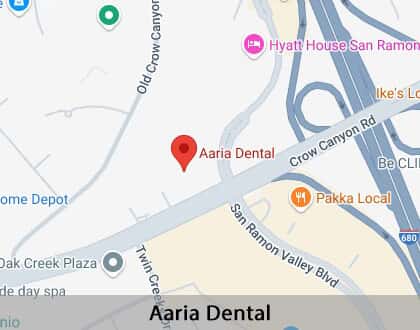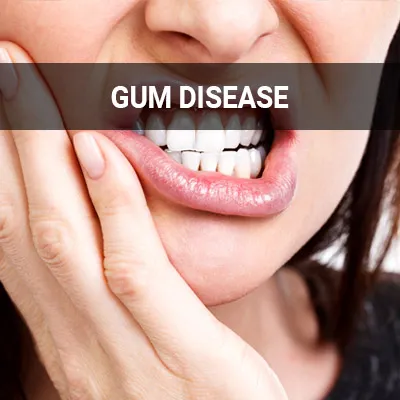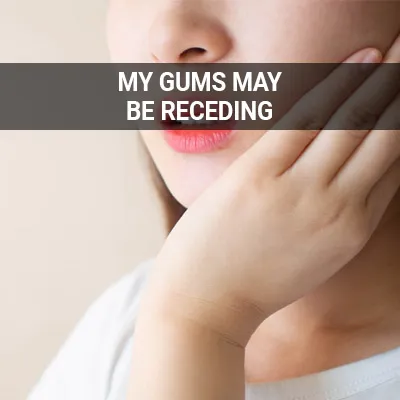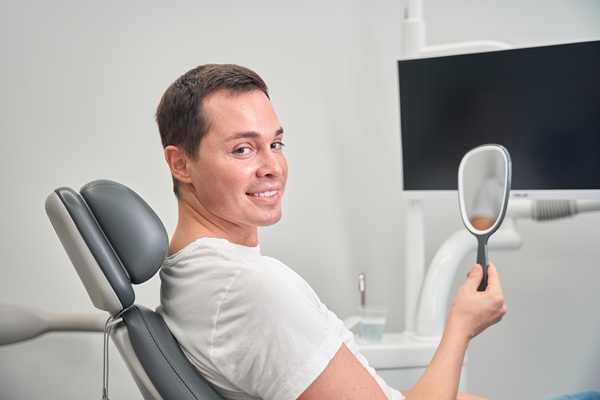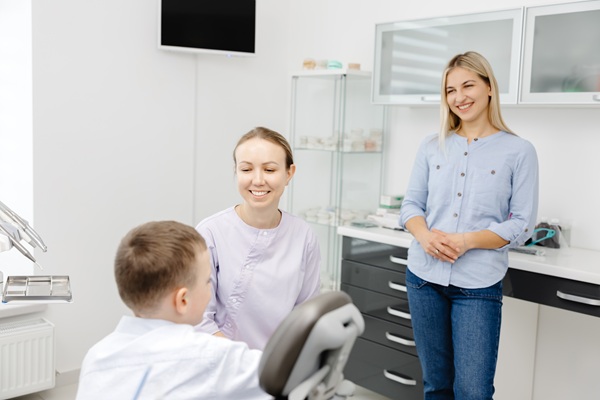Periodontics San Ramon, CA
Periodontics is a specialty field of dentistry that focuses on diagnosing, treating, and preventing periodontal disease. If left untreated, periodontal disease can have disastrous consequences. A periodontist is a dental specialist that works primarily in the diagnosis, prevention, and treatment of periodontal disease.
Periodontal treatment is available at Aaria Dental in San Ramon and the surrounding area. Your gum health is a reflection of your overall health. Call us today at (925) 967-2444 to schedule an appointment or learn more about our services.
Signs Indicating Need for Periodontal Treatment
The most common cause of periodontal and gum disease is plaque buildup, often the result of poor oral hygiene habits such as inadequate brushing, flossing, and rinsing. Plaque eventually leads to tartar, a substance that eats away enamel and causes inflammation and infection. Tartar can also reach below the gum line, making the teeth harder to clean and maintain.
Other common risk factors include diabetes, hormonal changes in girls and women, medications that decrease saliva flow, certain illnesses, and genetics. According to the CDC, signs or symptoms related to periodontal disease include:
- Bad breath or bad taste that will not go away
- Red or swollen gums
- Tender or bleeding gums
- Painful chewing
- Loose teeth
- Sensitive teeth
- Gums that have pulled away from your teeth
- Any change in the way your teeth fit together when you bite
- Any change in the fit of partial dentures
“The most common cause of periodontal and gum disease is plaque buildup, often the result of poor oral hygiene habits such as inadequate brushing, flossing, and rinsing.”
Types of Periodontal Procedures
Periodontists offer a wide variety of procedures, including both hard tissue procedures and osseous procedures. Osseous procedures are any periodontal procedures that reduce bacteria underneath the gums. This process is also known as osseous surgery. During this treatment, Aaria Dental will also smooth down any areas of bone damage or bone irregularities. Periodontal regeneration techniques may also be necessary if the bone is severely damaged, and the gums will be sewn back together.
Periodontists may also choose to manipulate the hard tissue to remove bacteria from the pockets, thus stopping the spread of periodontal disease and infection. Thanks to modern technological advances, periodontists can perform such procedures via non-invasive laser periodontal therapy, which removes any inflamed gum tissue from around the tooth's root and tartar and plaque below and around the gumline.
“Periodontists offer a wide variety of procedures, including both hard tissue procedures and osseous procedures.”
Detecting Periodontal Disease
Typically, patients are screened for gum and periodontal disease during their routine check-ups. Dentists can identify and diagnose periodontal disease by checking for gum bleeding, swelling, firmness, and pocket depth (space between teeth and gum line). They also assess teeth movement, sensitivity, and proper alignment. If there are concerning symptoms, they may also examine the patient's jawbone to detect any broken bones surrounding the teeth.
Stages of Periodontal Disease
The three stages of periodontal disease are gingivitis, periodontitis, and advanced periodontitis. Gingivitis is the beginning stage and refers to inflammation of the gums. Treatments for gingivitis include a professional cleaning and special mouthwash that eliminates bacteria from the gums. Periodontitis, the second stage, occurs when bacteria or infection has spread beneath the gum line. This stage is also reversible and can be treated by professionally cleaning the pockets using a special tool. Advanced periodontitis, the final stage, refers to when the infection damages the underlying bone and surrounding tissues, causing tooth loss or severe shifting.
“Dentists can identify and diagnose periodontal disease by checking for gum bleeding, swelling, firmness, and pocket depth.”
Check out what others are saying about our dental services on Yelp: Periodontics in San Ramon, CA
Preventing Periodontal Disease
There are a variety of ways patients can prevent the development and progression of periodontal disease. First and foremost, practicing adequate oral hygiene habits is essential for proper oral care and function. The American Academy of Periodontology suggests doing the following to prevent periodontal disease:
- Brush your teeth: Brushing after meals can help remove food debris and plaque trapped between the teeth and gums; especially if one thoroughly brushes the tongue.
- Floss: Flossing at least once a day can help remove food particles and plaque between teeth and along the gum line that your toothbrush cannot quite reach.
- Swish with mouthwash: Using a mouthwash helps reduce plaque and can remove remaining food particles that brushing and flossing missed.
- Know your risk: Age, smoking, diet, and genetics can all increase the risk for periodontal disease. If at increased risk, be sure to talk with the dental professional.
- See a periodontist: Get an annual comprehensive periodontal evaluation (CPE) from a dental professional. A CPE looks at the teeth, plaque level, gums, bite, bone structure, and other risk factors for periodontal disease. Identifying symptoms of gum disease early is key to protecting the teeth and gums.
“First and foremost, practicing adequate oral hygiene habits is essential for proper oral care and function.”
Questions Answered on This Page
Q. What are some signs that indicate a person may have periodontal disease?
Q. How do dentists detect periodontal disease?
Q. What happens during periodontal surgery?
Q. What are some examples of hard tissue procedures and osseous procedures?
People Also Ask
Q. What are common signs of gum disease?
Q. How is gum recession treated?
Q. What are the risk factors for oral cancer?
Q. What are the reasons for tooth extraction?
Q. What are some of the signs indicating a need for tooth extraction?
Periodontal Surgery
In severe cases and advanced stages, some patients may require periodontal surgery to effectively remove an infection. Periodontal surgery consists of a variety of treatments that target different regions of the mouth. Surgical procedures include flap surgery, bone grafting, guided tissue regeneration, or soft tissue grafts.
During periodontal surgery, a small cut or cuts are made in the gums, lifting back a section of tissue. This allows the periodontist to remove tartar, bacteria, and infection from the gum sockets and the teeth. The gums are then reattached to fit more securely on the teeth. The entire process takes about two hours and the recovery period can take up to two weeks.
“Surgical procedures include flap surgery, bone grafting, guided tissue regeneration, or soft tissue grafts.”
Frequently Asked Questions About Periodontics
Q. Will my insurance cover periodontal treatment?
A. While the answer to this question varies on a case-by-case basis, most dental insurance policies tend to cover periodontal treatment. For the most accurate possible answer, speak to your carrier directly. Do not forget to bring your medical and dental benefit information and cards to your appointment.
Q. Can my kids develop periodontal disease?
A. It is rare for children to develop periodontal disease, though it does sometimes occur (particularly in adolescents). In any case, it is essential for patients of all ages to learn the importance of keeping a good oral hygiene routine to keep periodontal disease at bay in the future.
Q. Are there any consequences to missing teeth?
A. Yes, missing teeth are more than just an aesthetic issue. The teeth surrounding the gap may shift, and it may be more difficult for you to chew your food properly or even affect the way you speak. As such, it is crucial to address missing teeth as soon as possible.
Q. What can I expect from my first periodontal examination?
A. During your first periodontal examination, you will undergo a thorough physical examination of your mouth. Along with other things, Aaria Dental will check the health of your gums, the status of your teeth, and the alignment of your bite. We may also perform certain imaging tests to make an accurate official diagnosis.
Q. What else can periodontists do?
A. While most periodontists spend most of their time diagnosing and treating gum disease, they can also perform various other procedures. These include placing dental implants when natural teeth cannot be saved, monitoring implants, correcting gum recession, and coordinating comprehensive dental care along with your dentist.
Periodontic Terminology
Call Us Today
Periodontal treatments can help prevent, curb, or treat periodontal disease and help you maintain a healthy oral cavity. Call us today at 925-967-2444 to schedule an appointment or learn more about our services.
Helpful Related Links
- American Dental Association (ADA). Glossary of Dental Clinical Terms. 2025
- American Academy of Cosmetic Dentistry® (AACD). Home Page. 2025
- WebMD. WebMD’s Oral Care Guide. 2025
About our business and website security
- Aaria Dental was established in 2023.
- We accept the following payment methods: American Express, Cash, Check, Discover, MasterCard, and Visa
- We serve patients from the following counties: Contra Costa County
- We serve patients from the following cities: San Ramon, Norris Canyon, Danville, Blackhawk, and Dublin
- Norton Safe Web. View Details
- Trend Micro Site Safety Center. View Details
Back to top of Periodontics

